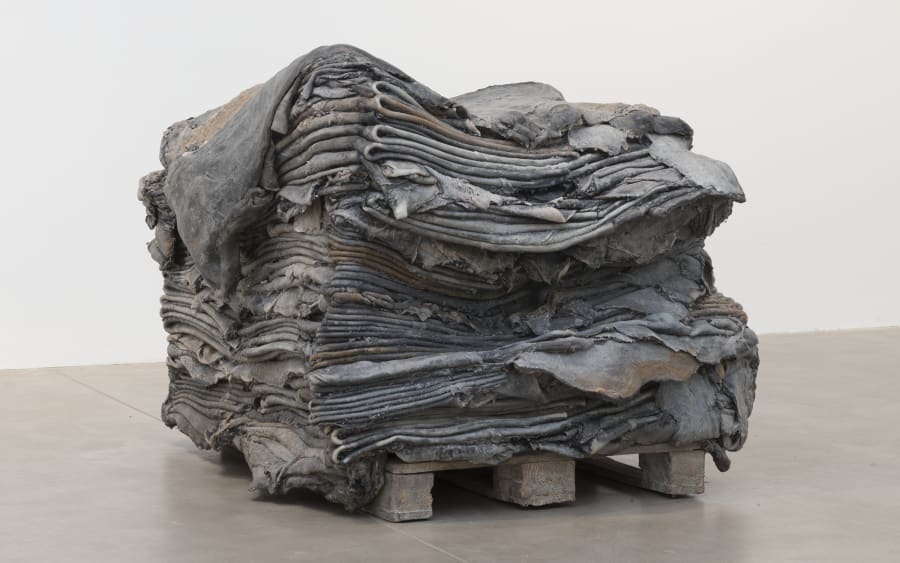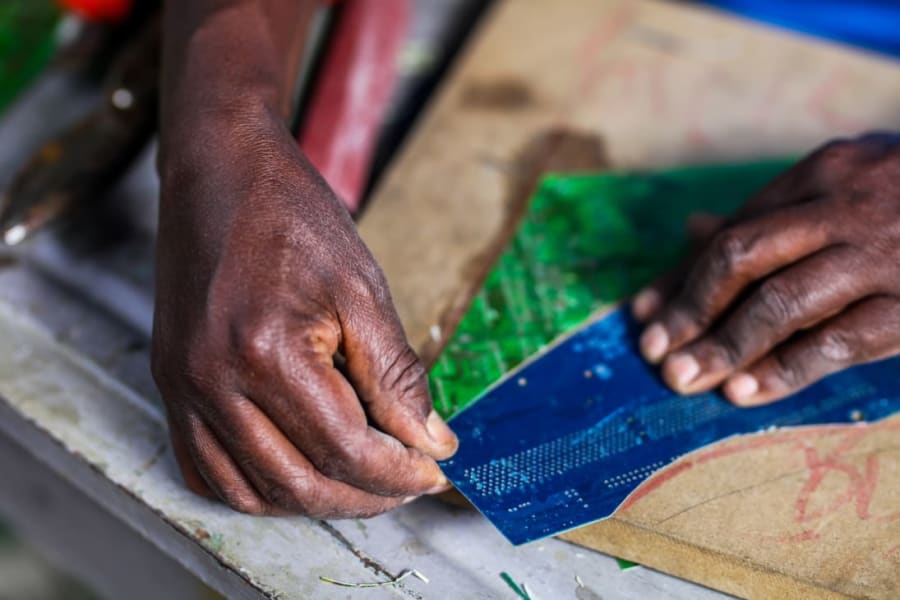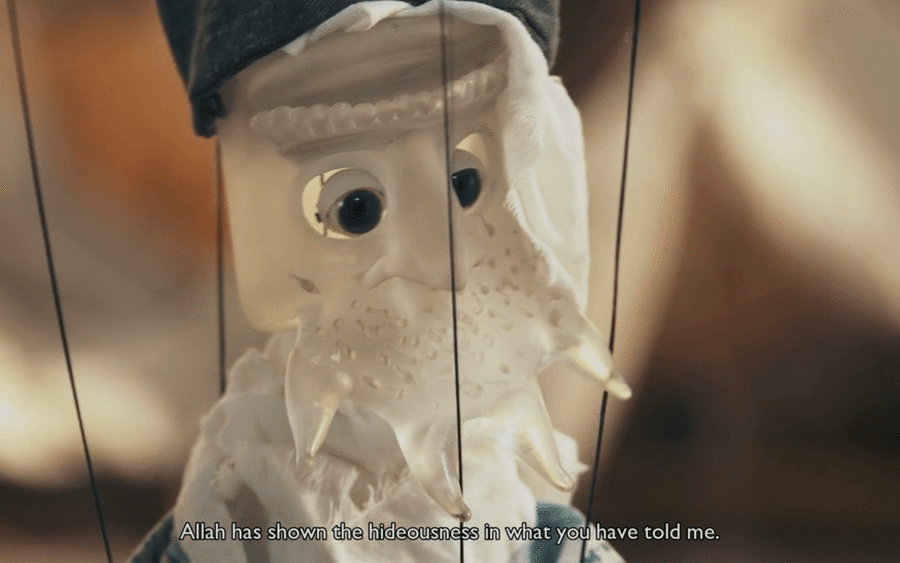Curated by Seolhui Lee and Jacob Fabricius, ‘ODORAMA CITIES’ marks the 30-year anniversary of the Korean Pavilion’s establishment in the grounds of the Giardini. Responding to the occasion, KOO JEONG A staged an open call for scent memories of Korea, resulting in the submission of 600 stories available to read on the Pavilion’s website, and the creation of 16 experimental scents and one commercial fragrance.
Since the 1990s, KOO has developed a body of work that is insightful, playful, and collaborative. KOO’s first scent-based piece, Pullover’s Wardrobe (1996), invited visitors to the artist’s studio in Paris to experience a mothball installation in private, while FLAMMARIOUSSS (2006), a collaboration with philosopher Édouard Glissant, involved KOO inserting the definition for ‘OUSSS’– a term describing the artist’s ever-expanding artistic worldview – in the Flammarion French dictionary. In 2012, KOO completed OTRO, a glow-in-the-dark skatepark designed for Vassivière Island in Beaumont-du-Lac, France, and the first in a series of skateparks that KOO developed for sites including the Liverpool Biennial in 2016 and Triennale Milano in 2019. A 3D film project exploring OTRO will be screened at the Palazzo Diedo in Venice, concurrent to ‘ODORAMA CITIES’.
Stephanie Bailey: Could you introduce ‘ODORAMA CITIES’?
KOO JEONG A: To create a scent map of the Korean Peninsula, we held an open the call to collect scent memories from people who live in South Korea and North Korea, people who are Korean but don’t live there, and people who have visited or lived in Korea. We collected 600 stories and produced one commercial fragrance, which we have bottled into a glass edition as the essence of the project, and 16 experimental scents based on common themes found in these stories, which we have installed outside and inside the pavilion. I had the idea to make a diffusing character for the project from my animation MYSTERIOUSSS (2017): a bronze sculpture with steam coming through the nose. I’ve also painted on the pavilion walls to acknowledge the authors who submitted their stories to us.
SB: What common themes did you extract from these stories to create these 16 experimental scents?
KOO: We collected words, phrases, places, and different times from the 600 stories so we could really portray the Korean Peninsula through smells – the scent of the evening or the forest in the morning, for example – and we worked with perfumers to create scents that were poetic but at the same time very realistic. One storyteller remembered experiencing the massive fish market of Jagalchi in Busan after arriving into the city by train, where they were met with ocean winds, the smell of salt, and raw fish. So we introduced a very realistic fishy smell that could have associations with other spaces, like another fish market in the center of Seoul where fresh fish comes in from all over the world, or the fish market in Venice, which is under the roof of a stone structure.
SB: What surprised you the most from the stories you received for your open call?
KOO: It surprised me how precisely people remember their intimate cartographies of time and space. One person wrote about the smell of a flower they saw on a mountain in Korea, and they remembered when they went, how they got there, who they traveled with, and the atmosphere that day. Someone else described remembering these small sweets they tried in Korea when they were eating custard cream donuts in Canada. Some people remembered the meals they cooked and ate with their families; the scents of the ingredients and being together. There were also industrial memories. One man recalled the smell of coal from the mine his father directed in North Korea during the Second World War. These memories create an incredibly expanded network of associations.
SB: You use scent in your practice to transcend physical space-time – because smells are so transportive when they trigger memories in people – and you’ve really expanded on this for the Korean Pavilion, whose context as a national pavilion you are also transcending, somehow…
KOO: Yes, exactly. Because this year marks the 60th Venice Biennale and the 30-year anniversary of the Korean Pavilion, I wanted to create a transnational vision of what the Venice Biennale could be as a porous and boundless space, where people can imagine common futures together. In the context of the Giardini, which is composed of national pavilions, I wanted to develop the kind of pavilion that we need to build for the future.
SB: This is a monumental scent project, in that sense, in terms of your practice. How and why did you begin working with scent?
KOO: When I traveled to Europe to study, I felt an incredible freedom to move around and experiment every day. I could make whatever exhibitions I wanted, especially if I worked outside of institutions or gallery spaces. In 1996, I made a 3-day exhibition in my home studio in Paris, Pullover’s Wardrobe, because I was changing studios and wanted to celebrate that shift. I invited everyone I knew in Paris to enter the space individually, and smell an installation of mothballs, and they still remember that show today. The way I practiced without worries at the time was fascinating to me: I realized I could use scent as a way to link memory, as information, which I could use to expand my practice.
SB: A practice without limits.
KOO: Yes.
SB: Which brings us to ‘OUSSS,’ a term you use to describe your artistic worldview, which you reference in Venice through a screening at Palazzo Diedo taking place concurrent to ‘Odorama Cities’.
KOO: I will be screening my 3D film project OUSSS, which I developed between 2014 and 2022. The film features my glow-in-the-dark skatepark, OTRO, which I created for Vassivière Island in Beaumont-du-Lac, France. In the Korean Pavilion, I refer to the patterns of the mobius ring, which is a form I’ve worked with for the skateparks I’ve produced in Milan, Arles, Liverpool, Sao Paulo, and Seoul, by engraving the symbol for infinity on the floors of the pavilion or as ring seating structures.
OUSSS functions as a module that I can continuously adapt. When you work with ideas, you have modules that, like your brain, you can develop by endlessly adding different ideas, correlations, and cosmologies to create functional structures, like poetry, which can inhabit space. This is the core of my practice.
SB: That expansiveness connects to your bio, right? You describe yourself as an artist who lives and works everywhere…
KOO: Early in my practice, this idea that I could go everywhere – that I could sleep and work everywhere – was always a provocation. I wanted this definition to operate like an artist manifesto: I am determined to be everywhere not only physically but also remotely. I am determined to be part of this world. Then I started working on different projects in different cities at many institutions and various sites, and living everywhere became connected to what I was invited to work on. As you find yourself within this space, you can multiply yourself, which relates to my interest in communicating with people from other disciplines and places.
SB: What is your personal scent memory of Korea?
KOO: It’s a question that everyone asks me, and I have to invent a new scent each time! I love the winter in Korea. When it’s cold, dry, and sunny, and the sky is totally cobalt blue, but then suddenly that dry cold enters a kind of vacuum space, and thick clouds turn the sky dark and grey, the city becomes quiet, and heavy snow starts to fall. I want to keep this in my bottle, actually.
Koo Jeong A is represented by Pilar Corrias (London) and PKM Gallery (Seoul).
Stephanie Bailey is Art Basel’s Conversations Curator, Art Basel Hong Kong, as well as the Art Basel Content Advisor and Editor, Asia.
Caption for top image: KOO JEONG A, KANGSE SpSt (detail), 2023-2024. Courtesy the artist. © KOO JEONG A
Published on April 15, 2024.


